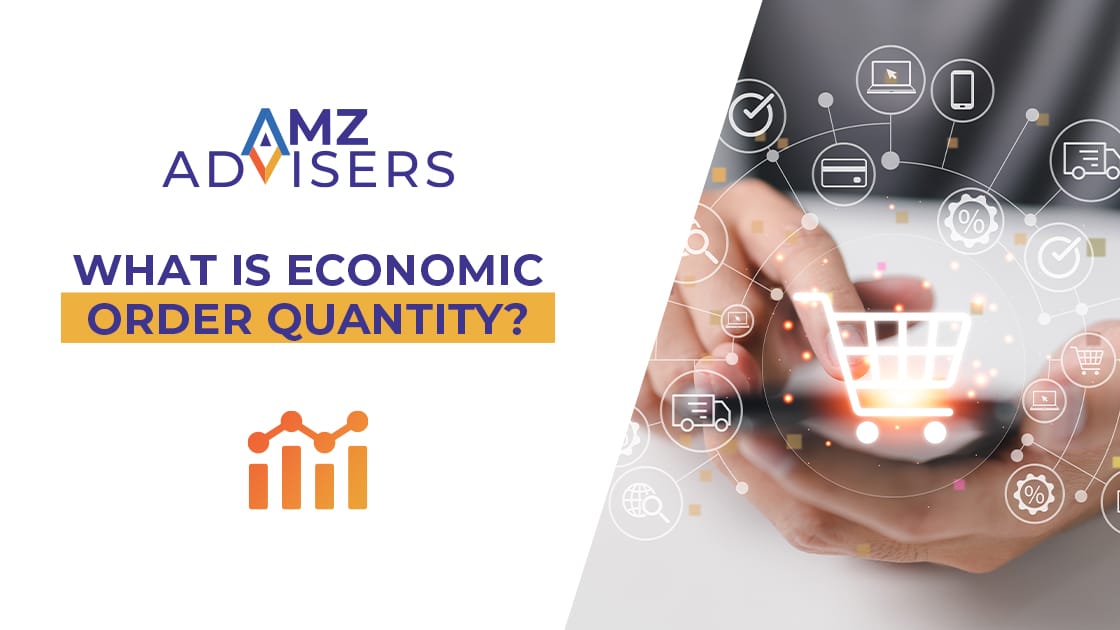When talking about eCommerce sales, brands need to view themselves on a worldwide scale. Global eCommerce sales are expected to reach $8.1 trillion by 2026.
When sellers are ready to grow, international expansion is often the first choice. Since eCommerce is a global business, brands can capitalize more by targeting a worldwide audience.
But there’s one main problem that eCommerce companies face when expanding internationally: what to do about shipping. International shipping for eCommerce can be complex and expensive.
Luckily, sellers can access many global eCommerce solutions with the right strategy.
Why Offer International Shipping?
As stated previously, selling internationally is an important growth strategy. In 2023, there were 2.64 billion online buyers globally. Even if you only offer select products to international customers, this can open up your business greatly.
But why may some businesses hesitate before expanding internationally? Shipping to other countries presents logistics challenges, and some sellers may not be ready to tackle these issues.
Global eCommerce is only getting bigger―so much that the worldwide online retail market is growing by 9.79% between now and 2029.
Since international online selling is in demand, there are numerous international shipping solutions for eCommerce so that any new seller can expand to the global market. For example, if you rely on the Amazon supply chain, you can take advantage of the Global Selling Program.
What International Customers Demand From Sellers
Before expanding to a global market, it’s best to know what your customers expect from you. This varies by region and niche, and all sellers must understand their target audience before creating an international sales strategy. But there are general tips to follow across all regions.
Expanding your store internationally starts with the inventory you offer. Understanding the products consumers want is vital, although this can vary by region. For example, clothing and books are the two most popular product categories in Japan. In contrast, German consumers demand clothing and shoes.
Because of this, all sellers should research individual regional markets to understand which countries they should expand to.
The checkout process is also vital to your store’s international success. Buyers expect it to be user-friendly and seamless, and sellers can use numerous tools to improve the process.
For example, customers will look for third-party platforms such as Shop Pay. This is a checkout option that saves a customer’s information―specifically, their address and credit card information―so that users can purchase items in only a few clicks.
Since Shop Pay expedites the checkout process, it increases conversions by 50%.
Some other pieces of advice to remember include:
- Offer delivery tracking
- Use a trusted carrier in the region
- Offer a tool so customers can calculate shipping costs before checking out
- Be transparent about extra fees, such as taxes and duties
Even if you conform to these best practices, understand you will be competing against household names in these countries. Standing out is the best course of action–offer something they can’t get at the local ma and pa store.
Best Practices for eCommerce International Shipping
Before shipping internationally, consider several factors to strengthen your strategy. Here’s some international shipping advice.
Know the Price
Ecommerce international shipping comes with more fees than domestic shipping. These include taxes, tariffs, and duties.
Import taxes are a percentage that customs agents will usually charge in advance before your delivery, though some regions may charge these taxes upon delivery. Duties are similar but are an after-tax fee directly to the local government.
Tariffs are another type of tax charged to foreign products. Their goal is to restrict trade and encourage customers to buy locally. Not every country has tariffs, and more nations are signing free trade agreements. However, it’s still important to note which countries will impose a tariff.
Fortunately, most major third-party shipping companies offer calculators to you and the consumer, so you know which fees you must pay. Sellers must pay attention to these costs to price products accurately.
Countries to Choose
Before expanding internationally, research the different global markets. This research may look different for various businesses.
Some brands may prioritize regions in close geographical proximity to ease the ecommerce international shipping burden. For example, if your business is located in the US, eCommerce in Latin America or Canada may be your first choice for international expansion.
For others, they may look at their current audience and analytics to see which consumers are demanding their items more. If your business is located in the US and you notice the bulk of your international traffic comes from China, you may want to expand to this region.
Some sellers see where their competitors are selling first. If your competitors have a bigger European presence, European marketplaces may be your best option.
Customs and Other Regulations
Every country has regulations when receiving items from different regions. If you don’t adhere to these regulations, you may face shipping delays and fines.
Some of these regulations may only apply to certain products, such as food. Note, however, that these regulations may affect other product categories, such as clothing, shoes, and personal care.
In addition, certain countries may prohibit the sale of products made with specific ingredients.
How can you find these regulations? Most nations offer a website where you can view eCommerce international shipping regulations.
Pack Correctly
Packing your item carefully will reduce eCommerce international shipping delays and extra fees. First, know the essential packing supplies. Start with a high-quality box or polymailer, but there are other parcel options if sustainability is a core aspect of your business.
Use a lightweight filler, such as paper, to protect the product and fill the space. Seal the opening and sides with durable packing tape.
Affix the shipping label to a visible place, taking care not to mark or fold the label. If necessary, print details and special instructions such as “fragile” or “heavy.”
Automation
Your customers demand information, such as when you ship your items and when your buyers can expect their deliveries. It can be tedious to do this manually, which is why automation is an integral part of eCommerce international shipping.
Depending on the courier you use, they offer resources that will keep your customers updated on every aspect of the shipping process.
Insurance
New to international shipping? Then you may wonder if insurance is worth it. It depends on what you’re sending.
If you’re sending anything fragile or expensive, shipping insurance can give you and your customers peace of mind.
That said, insurance is an extra cost. New sellers may budget as much as they can while expanding their business. If that’s the case, shipping insurance is only necessary if there’s a bigger risk the parcel will get damaged.
In addition, many couriers will cover damages for items worth a certain amount, so shipping insurance isn’t always necessary. If you’re unsure about the damages your courier will cover, offering shipping insurance as an option is always a good idea.
What You Need to Ship Internationally
Are you ready to learn how to ship internationally? Here are essential eCommerce international shipping factors that all brands need.
Logistics
There are different logistics solutions for businesses. Many use a third-party fulfillment company (we’ll cover this more in the next section), but there are more options.
Some businesses (such as home businesses) manage their own logistics. Other sellers may outsource certain logistics tasks, such as warehousing and shipping, and manage the rest themselves. Remote fulfillment or marketplace expansion are other options.
There are best practices when choosing any logistics company, whether they handle everything or only a few tasks.
Choose a logistics partner that offers all key services, such as storage, packing, labeling, and transportation. Most logistics companies also handle shipping, though you might need a separate courier for international shipping.
A logistics company with international experience may also be able to fill out customs and declaration forms for you. Your logistics partner should also be technology-centered, automating your stock management and storage and integrating these processes in your store’s backend.
Third-Party Fulfillment
Many eCommerce sellers seek help from third-party fulfillment (3PL) to ease the logistics burden. 3PL is when a brand outsources one company to handle most or all logistics tasks, including warehousing, picking, inventory management, packing, and international shipping.
When a customer places an order, the 3PL partner packs the items and ships the order. 3PL firms also have connections with couriers to offer cheaper shipping rates and expedited delivery options.
3PL partners not only handle all core logistics tasks but offer additional benefits, such as automation. You will always know what’s in the warehouse and which orders have been fulfilled.
But many new international sellers ask one question: Should you use your current 3PL domestic service or expand to an international fulfillment center?
For many brands, storing items domestically and shipping them cross-border is the best course of action. Since your inventory is close to home, brands can save money on fulfillment costs and pay international shipping costs when a customer in another country purchases their inventory.
If you gain enough sales in another country, it may be worth storing your items in a regional warehouse. This will save money and time, and your customers will appreciate cheaper and quicker shipping.
Many countries offer 3PL services for international sellers; for example, if you’re an Amazon international seller, you can access FBA in different regions. This way, you can access storage in Europe and other major markets.
Customer Service
Even if you have a robust international eCommerce shipping strategy, issues can arise. When this happens, you’ll need a high-quality customer service solution to communicate with buyers and address problems.
Sellers may need help with creating a customer service strategy in a different country. Language barriers and cultural sensitivities are common issues that many sellers aren’t prepared to face.
It’s best to outsource customer service in that region rather than rely on your domestic team. This way, you improve customer satisfaction and retention rates.
International Shipping FAQs
Why is international shipping expensive?
While this largely depends on where you’re located and where you’re shipping to, international shipping is often more expensive than domestic shipping. This is due to complex logistics, additional taxes and the cost of fuel.
What can I do to make international shipping cheaper?
If you only ship the occasional international parcel, seek solutions from a government-based courier. In the US, that courier would be USPS. These agencies often have the cheapest international shipping rates for smaller items.
However, if you often ship internationally or need to send a heavy and/or bulky parcel, it’s best to seek help from a third-party fulfillment company or international courier.
Why does international shipping take a long time? What can I do to expedite deliveries?
International shipping takes longer because these parcels travel longer distances, and multiple parties are exchanging the parcels. Customs delays can also occur.
Since most of these reasons are out of your control, the best course of action is to partner with a reliable international courier service that offers different fast delivery options.
Map Out Your ECommerce International Shipping Solutions
Expanding your business to a worldwide audience is one of the best growth methods for online sellers. But before attracting a global consumer base, sellers must figure out ecommerce international shipping.
When creating your international expansion strategy, start by knowing your target audience and which countries you should focus on. Weigh out the best practices, such as the cost of international shipping and the 3PL firms you should partner with.
If you want to expand to a global market, we can help with everything from international shipping to compliance. Click here to learn more about our services.
Author






